The Seven Deadly Sins of Product Promotion

A well-conceived product, advertising campaign, or innovation in service can be a gold mine for any business. When executed and promoted correctly, any of these things can lead to a brand dominating and industry and becoming a household name. Conversely, promotional mistakes can have devastating results. This can happen to even the best and the brightest. Some of the biggest headscratchers have been conceived by some of the most successful and well-known companies on the planet. By following their examples and learning what not to do, you can avoid repeating humiliating history. With that in mind, we'll share with you the Seven Deadly Sins of Product Promotion.
1. Thou Shalt Not Take Relationships for Granted
Perhaps the biggest violation of all time involves the creation of New Coke. In April of 1985, 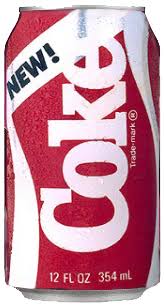 Coca-Cola rolled out a product that ultimately became an immortal punch line. Honestly, there can be no argument that Coca-Cola's advertising efforts have reached more people and have become a more deeply engrained element of Americana than those of any other company. Coke is one of those things that you know will always just be there; other than death and taxes, there are few things in American life more certain and ominpresent. Coca-Cola has forged a deep bond with our country and culture, quite possibly more than any other company ever has or will. You'd think a company that has such a huge advantage wouldn't be willing to risk it. In 1985, this thought was proven wrong.
Coca-Cola rolled out a product that ultimately became an immortal punch line. Honestly, there can be no argument that Coca-Cola's advertising efforts have reached more people and have become a more deeply engrained element of Americana than those of any other company. Coke is one of those things that you know will always just be there; other than death and taxes, there are few things in American life more certain and ominpresent. Coca-Cola has forged a deep bond with our country and culture, quite possibly more than any other company ever has or will. You'd think a company that has such a huge advantage wouldn't be willing to risk it. In 1985, this thought was proven wrong.
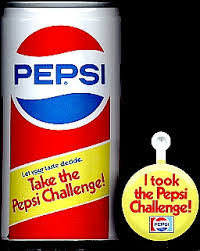 Anybody who is old enough to remember the 1980s will likely also remember Pepsi's two biggest advertising campaigns of the decade: "Generation Next" or "The Pepsi Generation" and "The Pepsi Challenge". The former aggressively targeted American youth though a non-stop onslaught of ads. Many of them featured prominent celebrities, most notably Michael Jackson, back when he was the undisputed King of Pop. The latter consisted of blind taste tests held throughout the country in which both Coca-Cola and Pepsi were sampled by participants. To Coca-Cola's horror and Pepsi's delight, Pepsi was frequently emerging as the victor. This, coupled with the growing popularity of non-cola sodas had the big wigs at Coke concerned. They knew they had to do something, but what? The answer, unfortunately, was New Coke.
Anybody who is old enough to remember the 1980s will likely also remember Pepsi's two biggest advertising campaigns of the decade: "Generation Next" or "The Pepsi Generation" and "The Pepsi Challenge". The former aggressively targeted American youth though a non-stop onslaught of ads. Many of them featured prominent celebrities, most notably Michael Jackson, back when he was the undisputed King of Pop. The latter consisted of blind taste tests held throughout the country in which both Coca-Cola and Pepsi were sampled by participants. To Coca-Cola's horror and Pepsi's delight, Pepsi was frequently emerging as the victor. This, coupled with the growing popularity of non-cola sodas had the big wigs at Coke concerned. They knew they had to do something, but what? The answer, unfortunately, was New Coke.
In April of 1985, Coca-Cola announced that it had abandoned its nearly 100-year-old formula in favor of a new creation that was superior. Not only did they say it was superior to the former Coke, but to Pepsi as well. Little did the brains behind this new product roll-out realize they were in the process of giving birth to one of the worst promotional campaigns of all time. New Coke did stick around for a while under the name Coke II, but by 2002, it was completely gone from this earth.
To be fair, New Coke's taste wasn't half bad, as this author can personally attest to. In fact, in blind taste tests, many people actually preferred the taste of New Coke. However, when they were told what it was that they'd just given the nod to, they declared they would never buy it, no matter how good it tasted. Reactions were especially visceral in the southeastern portion of the United States. Coca-Cola was invented in Atlanta and the company is still based there today. It's such a part of life there that many people simply refer to all soda as "Coke". They were furious and felt it was another time where the North was stepping them and disrespected them.
Anger quickly spread, and soon Coca-Cola was getting over 30,000 complaint calls per day. Things got so bad that the company had to hire a psychiatrist to help their employees deal with the situation. The psychiatrist remarked that the reaction was as if all of these angry callers had experienced a death in their families. Foregin countries were refusing to buy shipments of New Coke and Americans were spending in excess of $2000 to get crates of the old formula shipped to them from Europe.
Pepsi couldn't have been more thrilled, as their sales from May through July of 1985 were 14% higher as compared to the same period of the previous year. After 77 miserable days, it was announced that the original Coke would return, under the name of Coca-Cola classic. Several major television networks, including ABC, felt it to be such an important announcement that they interrupted programming with special reports to broadcast the announcement.
Coca-Cola sales soon jumped to higher levels than ever before, and the company had learned what a special relationship they had with Americans. Hopefully, they won't ever forget that again.
2. He Who Does Not Hesitate is Lost in Translation
Promoting one's products on a global level can potentially bring enormous financial rewards. If you have something great to offer and convey your message in a way that fits each targeted language and culture correctly, the results can be hugely beneficial. If you don't take the time to research the countries in which you plan to promote your product, the results can be costly and downright embarrassing. They can also be rather comical, but only to people who don't have a stake in the deal.
Coca-Cola
We're only on the second deadly sin and we're already mentioning Coca-Cola again. When you're one of the biggest and most successful companies on Earth, you're also going to make some of the biggest and most memorable mistakes along the way. The key to whether or not a business sinks or swims after said mistakes depends on how willing and able it is to learn its lesson and not repeat these same mistakes in the future. Historically, Coca-Cola has been pretty good at that.
Long before the days of New Coke, Coca-Cola was making its first attempts to penetrate foreign markets. For the most part things went well, but there were some bumps in the road when promotional efforts moved to China. They wanted to try to find the right combination of Chinese characters to put on their cans that would phonetically sound the most like "Coca-Cola". The best combination of characters they were able to find ended up saying, "To permit the mouth to be able to rejoice." It was awkward and weird, but it still managed to get the message across.
The trouble really began when purveyors of Coca-Cola who didn't speak or read Chinese especially well started to make and distribute their own signs. Two of the most commonly circulated models translated to "Bite the wax tadpole", and "Female horse fashioned with wax". It's not too hard to understand why those who first met Coke with those labels were hesitant to try it.
Pepsi
As previously mentioned, Pepsi's "Pepsi Generation" promotions were a smash hit in the USA and in nearly every other English-speaking country in the world. One of variation of this slogan was "Come alive with the Pepsi generation!" It was catchy enough, but once again, poor China was given a warped message. In China, this proclamation translated as, "Pepsi will bring your ancestors back from the grave!" Necromancy and the quenching of thirst typically don't go together. In a country where one's ancestors are greatly honored and revered, it's hard to come out with a worse product slogan than the one Pepsi accidentally released.
 Perdue - Everyone remembers lovable old Frank Perdue and his humorous homespun television commercials. Unfortunately, the Perdue tagline of "It takes a tough man to make a tender chicken" didn't sit so well with Mexican audiences. This is because it roughly translates to "It takes a hard man to make a chicken aroused" in the form of Spanish most widely spoken in Mexico. Chickens probably didn't like it so much either. The look of shock and awe on the chicken located to the left of this paragraph is unmistakable.
Perdue - Everyone remembers lovable old Frank Perdue and his humorous homespun television commercials. Unfortunately, the Perdue tagline of "It takes a tough man to make a tender chicken" didn't sit so well with Mexican audiences. This is because it roughly translates to "It takes a hard man to make a chicken aroused" in the form of Spanish most widely spoken in Mexico. Chickens probably didn't like it so much either. The look of shock and awe on the chicken located to the left of this paragraph is unmistakable.
KFC
"Finger lickin' good" is one of the most memorable and well-known promotional campaigns ever conceived. A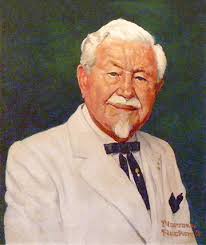 combination of intelligent advertising, tasty fried chicken, and business savvy helped the Colonel to become a world famous figure whose food is enjoyed around the world. KFC marketing should have done a bit more thinking before acting when it came to unleashing their slogan to foreign markets. In 1987, the First Kentucky Fried Chicken franchise opened in China. When it did, patrons were met with merchandise that, in their language, said, "Eat your fingers off." That's a pretty rude command. Harlan "Colonel" Sanders died in 1980, but if he'd been around to hear about it, he'd have some critical words to issue to his marketing troops.
combination of intelligent advertising, tasty fried chicken, and business savvy helped the Colonel to become a world famous figure whose food is enjoyed around the world. KFC marketing should have done a bit more thinking before acting when it came to unleashing their slogan to foreign markets. In 1987, the First Kentucky Fried Chicken franchise opened in China. When it did, patrons were met with merchandise that, in their language, said, "Eat your fingers off." That's a pretty rude command. Harlan "Colonel" Sanders died in 1980, but if he'd been around to hear about it, he'd have some critical words to issue to his marketing troops.
Green Giant
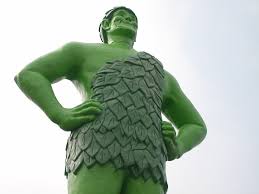 The Jolly Green Giant might be big, but he's friendly. He and his son Sprout have been welcome guests in our homes for decades and true icons in healthy eating. He'd likely be a little less than jolly if he knew what was being said about him in Arabic speaking nations. His name translated to "The Intimidating Green Ogre". A name like that isn't going to make finicky kids more likely to eat their vegetables.
The Jolly Green Giant might be big, but he's friendly. He and his son Sprout have been welcome guests in our homes for decades and true icons in healthy eating. He'd likely be a little less than jolly if he knew what was being said about him in Arabic speaking nations. His name translated to "The Intimidating Green Ogre". A name like that isn't going to make finicky kids more likely to eat their vegetables.
Ford
One of Ford's former advertising mantras was "Every car has a high-quality body." When used in Belgium, the claim transformed into "Every car has a high quality corpse." Aside from hearses, no product will be helped by that claim.
Pee Cola
In Twi, a language spoken in the African nation of Ghana, pee is a slang term meaning "very good". Needless to say, Pee Cola hasn't had much success in places where Twi isn't spoken.
3. Don't Try to Be Something You're Not
In the mid 1990s, McDonald's decided they wanted to try to target a more adult market. They did this with some success in the 1980s with the unforgettable Mac Tonite, but eventually ol' Mac got the axe after McDonald's was sued by the estate of Bobby Darin for the character ripping off the song "Mack the Knife". Aside from the character stressing that McDonald's was a good dinner option, no real changes were made and things were okay. Ten years later, they attempted a similar ploy with a new line of supposedly gourmet menu options targeted to adults. The results were catastrophic, and the main culprint was the now-infamous Arch Deluxe.
Even if the Arch Deluxe had been successful, its promotion was enormously expensive. All told, McDonald's ended up spending over $300 million on a product that became a laughingstock. One would assume that their failed pizza experiment only a few years before would have taught McDonald's to stick to their roots as a low-cost, high-convenience burger joint, but those lessons were quickly forgotten. In 1996, McDonald's launched a huge advertising campaign that was aimed at letting everyone in America know that they were taking the high-brow, adult oriented approach. Even Ronald McDonald had abandoned his pint-sized pals (as well as poor Grimace) to hit trendy nightclubs and play golf with the elite, or so the commercials showed us.
The lynchpin of their new promotional campaign was to constantly show children being repulsed by the Arch Deluxe, which wasn't the most ingenious strategy ever conceived. Don't take our word for it; just take a look at the video below.
The hamburger itself wasn't bad at all. It consisted of a flavored 1/4 beef patty topped with lettuce, tomatoes, onions, optional bacon, and a "secret" sauce, not to be confused with the much more successful special sauce of Big Mac fame. The fatal flaw in this promotional premise was that people do not, never have, and never will look to McDonald's for gourmet fare. A business lunch with a key client or first date that takes place at McDonald's is not likely to go over well. After constant heckling and a lot of unsuccessful spending, McDonald's learned the hard way that if you're an established worldwide business with a cemented reputation, you just have to be yourself.
4. Hates Makes Waste
No matter how brilliant an idea is, it's not going to work out if you don't take your time and pay attention to details. Many companies have rushed product development along out of a desire to run holiday season promotions and ended up having a potentially successful item turn into a complete flop. Perhaps two of the most famous examples of this deadly promotional sin were comitted by the same company.
The Atari 2600 was released in 1977. While it wasn't the first home gaming console to hit the market, it was the first to be massively successful. Even today, the classic gaming library from the 2600 has a timeless appeal. The graphics are simple at best and require you to use a lot of imaginiation. Soundtracks were pretty much non-existant and the sound effects of these games had a gratingly loud and static-laden quality. Still, this system was a hit and is widely recognized as being the Godfather of the complex and cutting-edge gaming consoles of today. Even if it was expected, not everything Atari touched turned to gold.
In the late 1970s and early 1980s, arcades were the place to be for kids and teens who wanted to have some fun hanging out with their friends. There were several different video games that drew flocks of gamers in, but none quite so consistently and famously as Pac-Man. It even had its own musical homage called "Pac-Man Fever", which put one-hit-wonders Buckner & Garcia on the map. In 1981, Atari saw a huge opportunity in becoming the first to provide a home version of this insanely popular game. They wanted to have the game developed and completed quickly enough to hit the shelves before Christmas.
The video below shows the arcade-quality version of the game that Atari hoped to bring home to consumers:
It was a great idea, but there were a few fundamental problems. For one thing, it was already May when work on the project began. This meant that the game would have to be developed at warp speed. The second obstacle was the fact that the Atari 2600 didn't have nearly the same range of capabilities as the system board used in the arcade version of Pac-Man. This project failed on two levels. Even with a rushed development job, the first cartridges still weren't available until March of 1982. So much for the Christmas promotional plan. Much more significantly, the system's limitations and unreasonable time constraints put upon the developers led to one of the most disappointing video games of all time. If you've never seen the original Atari Pac-Man game, you can feast your eyes on it now.
This game might have performed well enough if the arcade version didn't already exist and create such a high standard. Unfortunately for Atari, it did. Consumers who played the Atari 2600 version of Pac-Man were struck by its many inadequacies. As can be seen in the video, the sound effects were off, Pac-Man himself looked horrible, and the ghosts looked even worse. Additionally, due to processing limitations, the 2600 was only capable of displaying a finite amount of enemy sprites on the screen at any one time. This is why instead of four smoothly-traveling ghosts, this game pitted Pac-Man against flickering ghosts with a decidedly herky-jerky style. Programming and time constrains also made it so that the ghosts' colors were barely discernable and each individual ghosts' unique behavioral traits didn't carry over from the arcade game to the home version.
To be realistic, it's not a horrible game for a 4-bit system and it's not unplayable. Still, as unreasonable as they may have been, the public's expectations were not met. For a brief time, it was considered to be Atari's worst-ever product. This assessment didn't last very long though. Less than a year later, Atari put together another rush job and produced an even worse game. This game was so bad that it is credited with causing the Video Game Crash of 1983, a disaster that almost killed video games for good. In 1985, the NES came along and restored the world's faith in video games, but for a time, it looked like they'd run their course.
The game we're referring to is ET: The Extra-Terrestrial. This game was based on the movie of the same name, but aside from the title and the concept of E.T. wanting to "phone home", any connection between the movie and the game was virtually non-existent. How could one of the most popular movies of all time spawn THE most unpopular video game of all time? The answer is simple. Lead developer Howard Warshaw was only given 5 weeks to create the game from top to bottom. Basically, Atari had demanded the impossible out of one of the best video game programmers of the 80s.
Here's a video starring Warshaw, relating the story of this ill-fated video game:
The plot of the game sounds simple enough to be boring. E.T. needs to find 3 pieces of an intergalactic communications device so he can once again phone home. While the premise was simple, game play was not. The graphics were poor enough that many users couldn't tell what they were looking at or where they were going. The top-down perspective only made things worse, as each screen E.T. entered looked pretty much exactly like the one that preceded it. Due to this, it was extremely easy for a player to get lost. Exacerbating the situation was the fact that there were several pits on each screen that E.T. could fall into. This was somewhat productive as the pits needed to be explored to find the missing parts of the communication device. However, most of the holes held nothing of value, but due to poor controls, players couldn't avoid falling into them anyway. Once E.T. had fallen into a pit, getting him out was mostly an exercise in futility.
In addition to causing the Video Game Crash of 1983, this game also set the time-honored tradition of movie-based video games being laughably bad. Nearly a million cartridges ended up being returned, where they sat like defeated warriors in an El Paso warehouse. Eventually, the games were buried in New Mexico. They were excavated 30 years later and one of the cartridges now resides at the Smithsonian Museum in Washington DC.
5. Pride Goeth Before Fall
We've just talked about a horrible video game involving the movie E.T.. Unfortunately, if taken from Mars Inc's point of view, or fortunately, if you look at it from Hershey's point of view, the video game wasn't the only promotional blunder related to this classic film. Before E.T. was filmed, its producers approached Mars Inc, asking if they'd be interested in having M&Ms promoted by way of being the candy used to lure the title character. Thinking that the film wasn't good enough and not wanting their candy to be associated with it, Mars declined. Not wanting to abandon the scene, the producers then contacted Hershey's and asked if they'd be willing to step up to the plate with their then-obscure Reese's Pieces. Hershey's was told they wouldn't even have to pay for this exposure; they'd just have to agree to engage in a mutual promotional deal while the movie was in theaters.
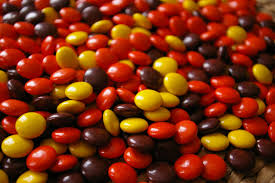
As anyone who has seen the movie already knows, this offer was accepted. It ended up being one of the most successful movies of all time, and Reese's Pieces soon became a household name. For the first time in history, Reese's Pieces began outselling M&Ms. As part of the promotional deal, they were also sold in movie theaters for the first time, where they performed very well. Even today, is tough to watch E.T. without building up a powerful hankering for some Reese's Pieces. In the end, Mars learned the hard way that you shouldn't let a good opportunity pass you by because you think you're too good for it. Just look at that big pile of Reese's Pieces to the right of this paragraph. You wan't some, don't you?
6. You Can Only Stretch So Far Before You Snap
Sometimes expanding your product line is a good thing. In fact, it usually is. Regardless, there are some times where companies try to wedge their way in to markets where they just don't fit. These overagressive expansion tactics usually end in failure, and it's hard to imagine how it is that the minds behind them couldn't have seen how crazy their ideas were. Throughout marketing history, such attempts have come and gone. Some are just a little weird and others are absolutely bewildering. We'll take a look at some from Column A and some from Column B.
Colgate Frozen Dinners
The first offender on the list is Colgate. When you hear the name Colgate, what's the first thing that comes to mind? Unless you're a student or staff member at Colgate University, it's probably toothpaste. After all, this is what Colgate is famous for. With the success of their toothpaste, it's not so hard to understand why they've branched out into other products. Mouthwash, tooth brushes, dental floss, and whitening strips are among the many items that bare the Colgate name. These expansions are practical and logical, and they've been a boon for business.
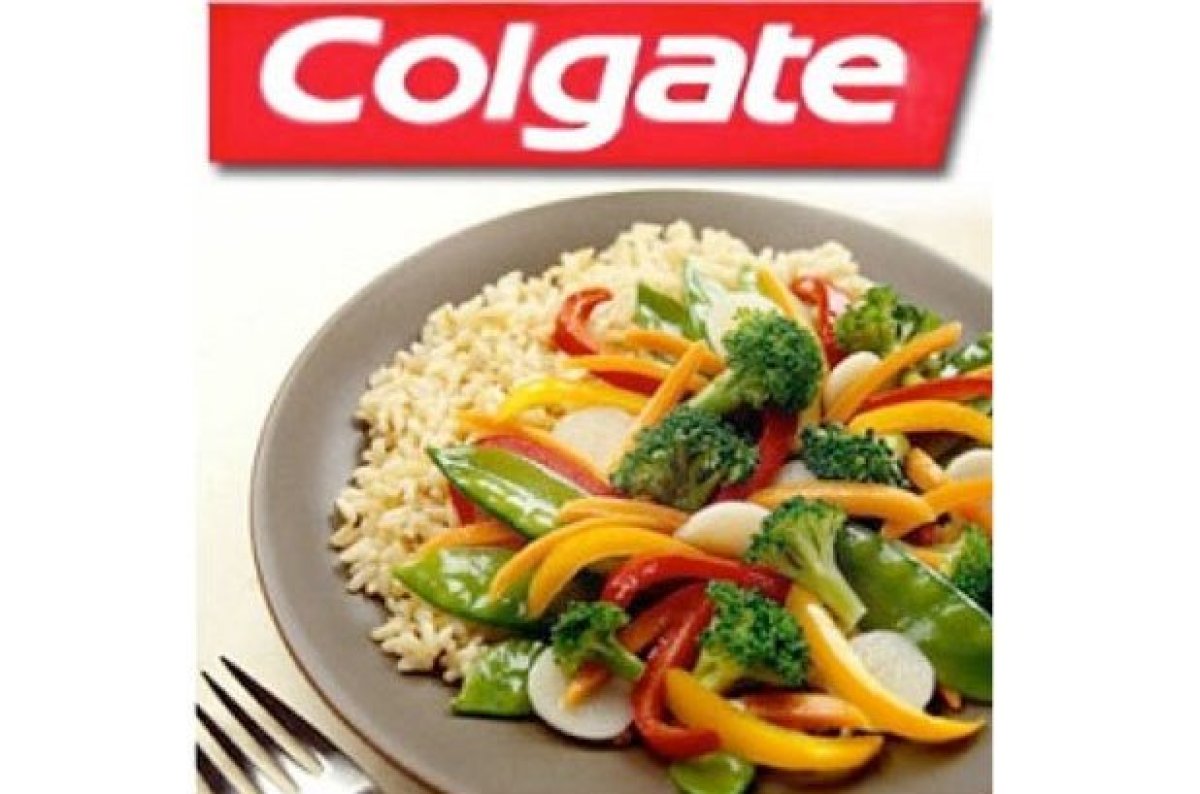 A little over 30 years ago, Colgate deviated from their sensible strategies and tried to break into the frozen food business. They created several different frozen dinners, which went by the name of Colgate Kitchen Entrees. The idea behind this was that Colgate would become a bigger part of people's lives by expanding the hours of the day in which they were a presence in them. By eating a Colgate dinner and then brushing one's teeth with Colgate toothpaste, a powerful bound would be formed. All that would be needed to complete the picture would be a Colgate worker to come and tuck you into bed at night.
A little over 30 years ago, Colgate deviated from their sensible strategies and tried to break into the frozen food business. They created several different frozen dinners, which went by the name of Colgate Kitchen Entrees. The idea behind this was that Colgate would become a bigger part of people's lives by expanding the hours of the day in which they were a presence in them. By eating a Colgate dinner and then brushing one's teeth with Colgate toothpaste, a powerful bound would be formed. All that would be needed to complete the picture would be a Colgate worker to come and tuck you into bed at night.
Somehow, things didn't quite work out that way. It turned out that these new promotional products ended up causing more confusion than connection. Whether it was their stir fries, chicken with pasta, or lasagna, associating food with toothpaste just wasn't appetizing. Anyone who has ever eaten breakfast or downed a glass of orange juice too soon after brushing their teeth could tell you that. From all available accounts, Colgate conducted very little marketing research before launching their promotional campaign for their Kitchen Entrees. They simply guessed that their consumers would be widows and and single people and tried to jam-pack magazines with coupons for their frozen dinners and to flood the television blocks they were expected to watch with commericals. In the end, their battle plan was about as successful as Napoleon at Waterloo and Colgate decided to leave the kitchen for good.
Harley Davidson Perfume
Some brands are so successful at reaching the public that entire cultures are built around them. Harley-Davidson is one of those brands. When you think of Harley-Davidson, you think of motorcycles, tough looking guys with tattoos and bandanas, freedom, rebellion, and authenticity. These are the building blocks on which Harley-Davidson has built its reputation and its rapport with those who are part of the Harley was of life.
One thing that nobody thinks of when they hear the words "Harley-Davidson" is primping and preening. The toiletries market is about as good a fit for them as a size 3 sneaker for Shaq. Nonetheless, they tried to break into it with their own line of perfumes. It should come as no surprise that these weren't hot items and that the sales numbers were less than impressive. It's tough to even award any creativity points for their promotional efforts, as most of the perfume containers looked just like Zippo lighters. While authentic Zippo promotional products are always a hit, this attempt was just all around poorly-conceived strategy.
Bic Disposable Underwear
Bic gets the trophy for not only having the worst promotional product idea on our list, but also for having the most bizarre one. Bic is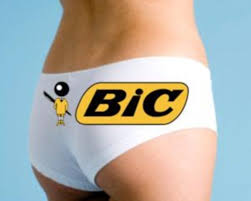 famous for their disposable razors. There's probably no name more closely attached to shaving than Bic, whether it be for a beard or for legs. Their reputation and quality products have kept them around and staying more than competitive, even decades after the introduction of electric razors. In fact, Bic likely precedes the word "disposable" more frequently than any other company name in existence.
famous for their disposable razors. There's probably no name more closely attached to shaving than Bic, whether it be for a beard or for legs. Their reputation and quality products have kept them around and staying more than competitive, even decades after the introduction of electric razors. In fact, Bic likely precedes the word "disposable" more frequently than any other company name in existence.
In additon to their razords, there are tons of popular Bic promotional products for businesses out on the market. They're a company that knows how to expand, advertise, market, and create products that are useful and economical. For the most part, Bic has been one of the most sensible and successful brands in the world for generations. Still, there's always an exception to every rule. For Bic, this exception came in the late 1990s when they attempted to market disposable underwear. You read that right: disposable underwear.
Aside from diapers, disposable undergarments are an area that few people have explored. Aside from being just plain weird, this new product line required a lot of effort on the part of Bic. Their razors, pens, and lighters were all made from the same basic materials, but quite obviously, underwear could not be. Making the product even more bizarre is the fact that the disposable underwear Bic came out with was marketed toward women. Perhaps they thought they'd be the practical and cheap answer to the decadence of Victoria's Secret lingerie, but all this product line ended up being good for was some confusion and a few good laughs. Perhaps they thought that women really hated doing laundry and getting out of that particular chore would be enough to make them flock to the nearest convenience store or pharmacy to purchase one-time-use underwear. Quite obviously, they were wrong.
7. Keep Shock & Awe Tactics In Check Before They Cross the Line Into Being Classless
Sometimes creating an advertisement or a promotional event designed to shock and maybe even offend a little a bit can be good for publicity. After all, it gurantees people will be talking about your product or organization and it will remain a hot topic in people's minds. Many have successfully applied this formula and have encouraged others to follow in their footsteps. When taking this route, a careful balance must be struck. Attempts that are too subtle will soon be forgotten and attempts that go too far will negatively impact your product, company, organization, or anything else you're trying to promote. The latter category stands to do far more damange, and that's what this section will focus upon.
Nationwide's 2015 Super Bowl Commercial
Nationwide definitely created a lot of conversation when it came out with a chillingly horrible commercial which aired during Super Bowl XLIX. This commercial, sometimes referred to as the "Nationwide Boy Commercial", used tragic shock and guilt in an attempt to assert the importance of their products. In this commercial, a young boy is shown riding a tricycle with his dog. He's trying and failing to catch up to some older kids who are riding bicycles. He then gives up and starts rattling off a list of things that he'll never get to do. He says he'll never learn to ride a bike, he'll never get cooties, he'll never get to travel the world, and he'll never get married. He then says that he'll never get to grow up, because, "I'll never get to grow up because I died in an accident."
After this declaration, shots are shown of an overflowing bath tub, an open kitchen cabinet filled with dangerous materials, and a fallen television set which as crushed the surrounding objects. Text then appears on the screen that stresses the fact that the leading cause of childhood deaths is preventable accidents. After this, a mother is shown carrying her young daughter and a narrator proclaims, "At Nationwide, we believe in protecting what matters most - your kids."
Reactions to this ad were extremely negative. Many felt it was insensitive toward people who had already lost a child and others felt that it was hitting below the belt to use such severe guilting and scare tactics to intimidate people into buying a product. Animal lovers were also bothered by the extra level of sadness that was incorporated into this commercial by way of showing the boy's beloved dog (whom he declares to be his best friend) at his side when mentioning everything he won't get to do. Appealing to emotions is fine, but this is one time where a line was crossed and Nationwide paid the PR price.
PETA
While PETA is an activism organization rather than a business trying to sell products, it still has important ideas and concepts which it wishes to promote. They tend to rely on the shocking and eye-catching side of promotion when trying to sell the public on their ideas and beliefs. There are several times in which they've been criticized by going too far, but we'll just quickly touch upon three of them.
 One such instance was a billboard they created in support of vegetarianism. On the billboard, an overweight woman in a bikini is depicted sitting at a beach. The caption reads, "Save the whales. Lose the blubber. Go vegetarian." Many felt that this was a crass way of promoting PETA's beliefs and that it would be harmful to women who already were struggling with body insecurity issues.
One such instance was a billboard they created in support of vegetarianism. On the billboard, an overweight woman in a bikini is depicted sitting at a beach. The caption reads, "Save the whales. Lose the blubber. Go vegetarian." Many felt that this was a crass way of promoting PETA's beliefs and that it would be harmful to women who already were struggling with body insecurity issues.
Another time when many people thought PETA crossed a line was when they were protesting the gestation crates that pregnant pigs are often kept in. While there's nothing wrong with opposing this practice, PETA could have done so in a much more constructive and classy way than the method they chose. They conducted a public demonstration against these crates by having a pregnant woman from their organization kneel inside of a gestational crate on a busy city sidewalk wearing nothing but a pair of panties. Predictably enough, this was met with outrage. Some people were angry as they felt this was degrading to women, some felt it was wrong because it exposed hundreds of children to public nudity, and others felt that it was slandering to pork industry.
Another pork-related PETA promotion that drew ire was a billboard created that deeply offended Christians. It showed a picture of a pig with the caption, "He died for your sins. Go vegetarian." The intent with this one was blatantly obvious and blatantly offensive. It's also very unlikely that it brought any new vegetarians into the world.
Political Statements That Went Too Far
People are passionate about poltiics, as well they should be. Mudslinging has been around for as long as there have been political candidates to receive it. It happens on all ends of the political spectrum. Sometimes it's witty, sometimes it's effective, and sometimes it'll make you think twice about an issue you'd never really pondered before. Then there are other times where political party promotions go straight for the throat, and often this is done to an excessive degree. We'll share two recent examples with you in just a moment. However, we're not going to show the billboards or give the names of the organizations/individuals responsible for them as the images are too offensive to show and the creators don't deserve a plug for their detestable creations.
Using tragedy to one's advantage is a dishonorable tactic to resort to. It's something that happens all too often in politics, but we're going to focus on two of the worst recent offenders. One of these was a billboard which depicted the 9/11 World Trade Center attacks. Beside the carnage, a caption appears pleading, "Please Don't Vote for a Democrat" The second billboard displayed President Trump surrounded by fire and mushroom clouds. To his left and right, there were swastikas fashioned into dollar signs. To use massive tragedies as horrible as the 9/11 attacks and the Nazi holocaust to slam a politician you dislike (especially when said politician has no connection to the holocaust whatsoever) is a shameful deed and one that's not going to help your efforts any.
That's it for today. Are there any companies that have committed one of these Seven Deadly Promotional Sins that we didn't cover? Are there greater promotional actions that you consider to be even worse? Leave a comment below and get the discussion started - perhaps you can teach us a thing or two!








